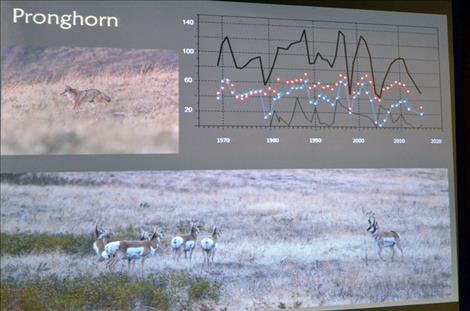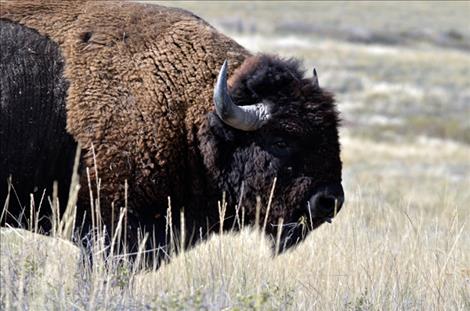Bison not the only ones on the range
Hey savvy news reader! Thanks for choosing local.
You are now reading
1 of 3 free articles.
MOIESE – Although bison get most of the attention, many species exist together with help from wildlife management on the National Bison Range.
Biologists have been busy studying those animals to find out how to help them thrive, and on Wednesday at the range, Bison Range biologist for the U.S. Fish and Wildlife Service Amy Lisk-Thomas shared many of the projects happening at NBR with interested folks during the Flathead Reservation Fish and Wildlife Board meeting.
Amy talked about the pronghorn babies that avoided predators this year, the bighorn sheep grazing on the hillside, the bats flying around at night and, of course, the bison.
One particular bison received added attention. Her every move was recorded for an entire year, but she didn’t have to endure anything like a reality television show. She was fitted with a tracking collar that helped record her location.
Amy was testing out the equipment on that one bison to find out if a larger tracking project would be worth the effort. She wants to collect data to find out how the bison naturally migrate and where they like to hang out. She hopes to use the collected information to enhance other areas on the range to the bisons’ taste so that they migrate to different locations on their own, which will result in less handling.
The information from one tracking test run wasn’t enough to draw any conclusions, but it did tell her that the program could work. She thinks the program could benefit the herd, and she hopes to start it up again in 2016 if she can find funding for the project.
The second most popular group at the range is said to be the pronghorns, otherwise known as antelope. Amy said the public loves the pronghorns. With deer-like bodies and a set of tall forward pointing horns, what’s not to love?
Amy said that this year four pronghorn fawns are doing well, although the overall herd is at an all-time low of about 60. The low numbers are due to predators, mainly coyotes.
The bighorn sheep population is booming despite recent problems. Twenty-three bighorn sheep were recently euthanized. It was thought that they might have come in contact with disease-carrying animals outside the fence. Range management didn’t want to take a chance of having the entire herd infected. Amy said she is currently waiting for test results to determine how to proceed.
Many bat species are being monitored on the range. She said very little is actually known about bats, but continued monitoring systems may offer more information.
Amy finished her talk with a shout out to an animal not on the range, which she happily reported were the invasive bullfrogs that can devastate native species.


















